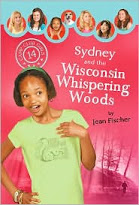
Show Don’t Tell. It’s the Genesis of the writing process, the tenet learned in grade school. Immerse your readers in a stew of their senses: see, hear, feel, taste, smell and touch. Amen. But not so fast. It’s like that verse in Ecclesiastes 3 says: “There is a time for everything, and a season for every activity under heaven.” Show don’t tell is no exception.
You can think of writing like applying makeup. Putting on just enough enhances one’s appearance, but too much can make you look like a waxy mold of a stringy, over-cooked ham. (See what I mean?) Good writers know that a manuscript isn’t finished until there is just the right balance of show and tell. But how do you decide?
When revising your work, first read each paragraph and look for telling places where:
Then decide if these narrative passages need to be spiced up with some showing:
Next, put your revising gear in reverse and check each paragraph for showing places. Look for the Extreme 3Ds:

Writing is an art form. Clichés like show don’t tell have their place, but they don’t command the writing and revising process. Great writers know when dramatization is needed and in what measure. Do you?
You can think of writing like applying makeup. Putting on just enough enhances one’s appearance, but too much can make you look like a waxy mold of a stringy, over-cooked ham. (See what I mean?) Good writers know that a manuscript isn’t finished until there is just the right balance of show and tell. But how do you decide?
When revising your work, first read each paragraph and look for telling places where:
- You explain how a character feels,
- You use an abstract description,
- You tell about a conversation.
Then decide if these narrative passages need to be spiced up with some showing:
- Is your character’s feeling a strong one? If so, then describe it by showing how the character looks and acts.
- Is an abstract description enough? If not, then add some juicy images and raw details.
- Is it sufficient to tell about a conversation? If a conversation is important, add dialogue to further develop your characters and move the story along.
Next, put your revising gear in reverse and check each paragraph for showing places. Look for the Extreme 3Ds:

- Excessive drama. Remember the makeup analogy? Use just enough drama to enhance. Too much will pull readers away from the story.
- Excessive dialogue. When characters talk, their conversations should be realistic. Too much dialogue can mean that characters are telling too much of the story.
- Excessive description. Have you showed more than you have to? Sometimes, writers use too many words to describe. Look for wordy descriptions, and replace them with fewer and well-chosen words.
Writing is an art form. Clichés like show don’t tell have their place, but they don’t command the writing and revising process. Great writers know when dramatization is needed and in what measure. Do you?













4 comments:
Great post, Jean. Thanks for sharing your insights.
Hi Jean -
Thanks for the excellent tips.
LOL! When I read the paragraph about excessive drama, a picture came to mind. Early silent films and "talkies" showed a heroine with the back of her hand on her forehead. Of course, there's also the villain, twirling his mustache.
If we're not careful, we can get the same effect with words.
Blessings,
Susan :)
Great comment, Susan. Remember the scene in Little Women where Jo and Amy put on a play for Marmie? "Rodrigo,Rodrigo, save me!!!!"
Hi, Janet.
Thanks for stopping by. Hope all is going well with you and your writing.
Post a Comment